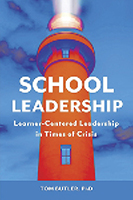 School Leadership: Learner-Centered Leadership in Times of Crisis
School Leadership: Learner-Centered Leadership in Times of Crisis
by Tom Butler, Butler Leadership Consulting, 2021, 170 pp., $15.95 softcover
In
School Leadership: Learner-Centered Leadership in Times of Crisis, author Tom Butler has written a book that outlines how the coronavirus pandemic exposed the difficulties school leaders face when balancing crisis management with long-term strategies. Butler argues that school leaders need to remain steadfast in their focus on the learners, create and articulate a vision of learning and develop a plan to become radically learner-centered based on the tenets of The New Learning Ecosystem.
Butler works as the executive director of the Appalachia Intermediate Unit 8, an educational service agency serving four counties and 35 school districts in rural Pennsylvania. Butler spent 28 years working in schools.
The text is easy to navigate, as Butler’s blueprint includes such strategies as “shadow boxes” designed to provide clarity for the reader on vocabulary or critical topics by sharing a definition, “My Two Cents,” the author’s opinion on the topic, and key quotes from other reference materials. The end of each chapter has a resource section that directs the reader to books, articles and web resources, and each chapter concludes with discussion questions.
A radically learner-centered focus occurs when all decisions within the school system are made through the lens of what is best for every individual leaner and decisions are not made for adult convenience. This philosophy follows the tenets of the New Learning Ecosystem, a framework of learning that places the learner and learning experience at the center of all decisions.
The content of the book allows the reader to walk along with an administrative team that adheres to this philosophy. Each character in the text shares from their position what the New Learning Ecosystem means for them when considering the day-to-day operations of their position.
Butler’s book could serve as a conversation starter within school communities that aspire to become radically learner centered. It may even be useful for a book study with the school leadership team, PTA, school board and faculty to move to a New Learning Ecosystem in a post-COVID-19 world.
Reviewed by William A. Clark, adjunct professor of educational leadership, Pennsylvania University World Campus, Warren, Pa.
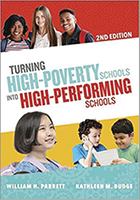 Turning High-Poverty Schools into High-Performing Schools, 2nd edition
Turning High-Poverty Schools into High-Performing Schools, 2nd edition
by William H. Parrett and Kathleen M. Budge, ASCD, Alexandria, Va., 2020, 206 pp. with index, $31.95 softcover
Authors William Parrett and Kathleen Budge have combed through the research on high-poverty, high-performing schools to report on what works. They identify 12 exemplary schools with different characteristics for further analysis. The result is a highly readable treatise for anyone interested in this topic, particularly for practitioners faced with the difficult task of leading a transition to a higher level of achievement.
There is lots of data herein about the status of education mainly over the last 30 years, which by itself can be depressing. This is especially true at the high school level, which overall shows little significant progress over time. The difficulties for everyone associated with poverty are explored from various angles. Questions and myths are posed throughout the pages to make the reader ponder and reconsider what they think they already know about teaching in a high-poverty school. For example, this book labels the statement that “…with governmental assistance people can get out of poverty” as a myth. Money is not enough.
The authors have concluded that improving student learning in high-poverty schools is one of the most daunting challenges confronting public education today. The work is highly complex and demanding. Yet public schools continue to demonstrate that the work can be accomplished, and the successes can be sustained. Positive instances are offered which provide hope and inspiration. Most importantly, this volume describes what high-performing/high-poverty schools do and, just as critically, what they do not do.
Numerous diagrams and charts allow the reader to consider a strategic perspective. Through stories and research findings, readers are surrounded with tactical examples of approaches successful schools have implemented to turn themselves around. It is virtually impossible to read this book and not come across concrete ideas to try. In fact, there is so much material, that it would be counterproductive to attempt every practice all at once.
Based upon my experience as a superintendent who transformed many high-poverty, low-achieving schools into models of excellence, I recommend every superintendent in similar circumstances study
Turning High-Poverty Schools into High-Performing Schools. High expectations are embedded alongside useful ways to improve student outcomes.
Reviewed by Art Stellar, former superintendent, Hingham, Mass.
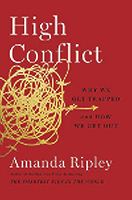 High Conflict: Why We Get Trapped and How We Get Out
High Conflict: Why We Get Trapped and How We Get Out
by Amanda Ripley, Simon & Schuster, New York City, N.Y., 2021, 368 pp., $28 hardcover, $18 softcover
Public school administrators are challenged to lead in ever more hyper-polarized environments. As a result, conflict is inherent in the social constructs of all public schools. Whether it be controversial issues such as Darwinism, the Phonics movement, or health practices associated with the pandemic, administrators must assimilate and maximize various extreme viewpoints to be successful in today’s democracy-based school leadership.
Amanda Ripley captures the nature of conflict in her latest book,
High Conflict: Why We Are Trapped and How We Get Out. She describes the essence of conflict to be the same whether it be among the gangs of Chicago, a divorcing couple, guerrilla fighters in Columbia, or a community dealing with a highly charged political debate.
The author characterizes the root cause of conflicts as:
»Humiliation: The sense that one’s dignity or pride has been injured.
»Fear: The concern that a threat of danger, pain or harm exists.
»Need for a Sense of Belonging: A basic need for affiliation or social connection.
»Need to Matter: A desire to make a difference, have an impact, or be significant.
Understanding these root causes can assist school leaders in dealing with conflict in a healthier and more productive manner. When leaders discern between these root causes, they can avoid the pitfalls essential to the dysfunction of discord and instead harness the power of healthy conflict. This is the space where people immersed in disunity can push and challenge one another intellectually and socially to the betterment of the organization.
Ripley’s suggestions for resolution are easy to read and understand, which can aid in implementation to reduce conflict in your organization. She challenges the reader to resist the binary. It’s tempting to simplify issues into right and wrong, good and bad or us versus them. However, she describes oversimplifying as a missed opportunity for overall growth and development when conflict is attached to winning and losing.
In a time of false simplicity, Ripley advocates for internal doubt and uncertainty to revive curiosity. By “catching yourself” when you are caught up in a binary conversation, you can apply real understanding of complexity and become more sophisticated, rather than reactionary, in your responses.
High Conflict: Why We Get Trapped and How We Get Out provides a new perspective for school leaders dealing with conflict in both their personal and professional lives. It is filled with case studies of failed and successful remedies. I highly recommend this book to brush up on your conflict resolution skills and to be reminded that the essence of conflict is much deeper than the basic issues that may currently be at play.
Reviewed by Donna W. Lewis, superintendent, Creighton School District 14, Phoenix, Ariz.
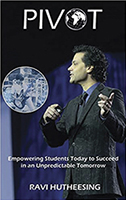 Pivot: Empowering Students Today to Succeed in an Unpredictable Tomorrow
Pivot: Empowering Students Today to Succeed in an Unpredictable Tomorrow
by Ravi Hutheesing, Ravi Unites Inc., Buckingham, Va., 2020, 150 pp., $24.99 hardcover
To pivot is to turn or change direction as needed, which is an essential skill for students living in the 21st century. By recounting his personal journey, Ravi Hutheesing offers compelling testimony about the importance of pivoting educational institutions toward a combination of traditional and real-world schooling. The book is designed to reach a broad audience — anyone who cares about education — and uses a storytelling approach to engage the reader in thoughtful reflection about public education.
Huthseeing is an international keynote speaker and founder of Ravi Unites. His career as a rock star, aviator, cultural diplomat and entrepreneur provides the perfect backdrop for his message about critical pivots necessary in education. He identifies four concentrations: inspire curiosity; recognize and nurture talent; provoke critical thinking; and foster communication. These four concentrations, he says, were instrumental in his success and illustrate the importance of providing these skills to enable the success of all students facing an ever-changing world.
The role of education in world peace is emphasized as well. Huthseeing notes, “Cultural competence is the pathway to equity, equity is the pathway to equality, and equality is the pathway to world peace.” He provides specific examples for how educators can begin to develop empathy in students, one of the critical skills in cultural competence.
After a year of navigating the challenges of the pandemic, Huthseeing has created a book that offers hope and reminds everyone it is indeed through education that we can change the world. His message is inspiring!
Reviewed by Theresa Alban, superintendent, Frederick County Public Schools, Frederick, Md.
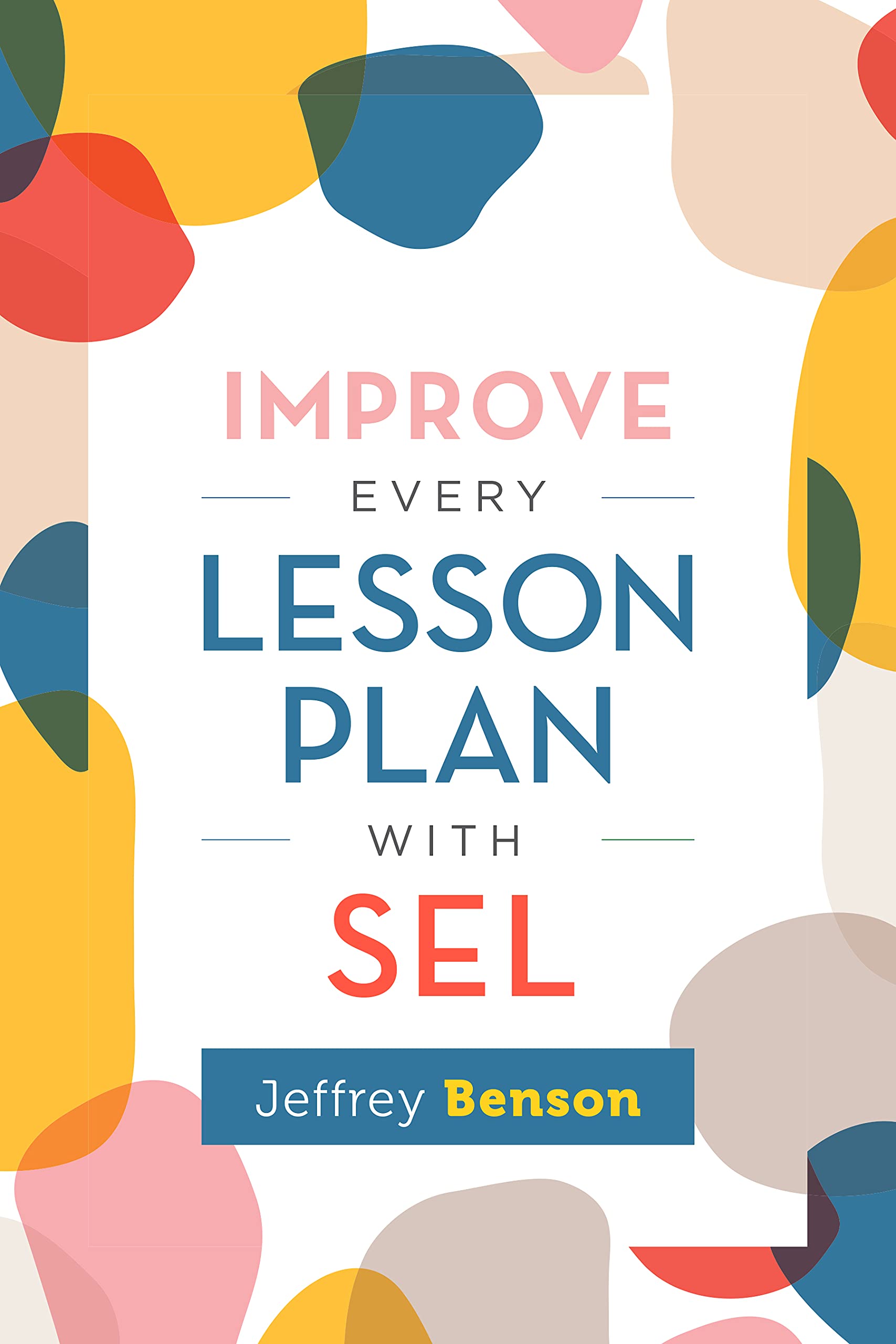 Improve Every Lesson Plan with SEL
Improve Every Lesson Plan with SEL
by Jeffrey Benson, ASCD, Alexandria, Va., 2021, 172 pp. with index, $28.95 softcover
Jeffrey Benson has worked as an educator and consultant for more than 40 years. As a teacher, he worked with challenging students and believes in the need to know each student personally before one can effectively teach.
In
Improve Every Lesson Plan with SEL, Benson talks about creating lesson plans as a teacher. Before he ends the process, he goes through his class roster to ensure that the academic needs of each student have been met.
Benson points out the direct connection between a student’s social-emotional learning skills and needs and preparation for academic learning. He emphasizes the need to understand how each student learns and what is important to them to engage them properly in learning.
Individuals have strengths and weaknesses and Benson feels strongly that consideration should be given to the whole child so the teacher can bring out the best in each student. He says SEL needs to be more than collecting instances of adverse childhood experiences and reviewing the CASEL standards. It is necessary, he says, to deliberately integrate and develop SEL into daily lesson planning to begin to “heal the wounds of passivity, racism, and inequity, but also give students an experience today, in your classroom, of that better world."
Benson’s book is full of teaching, learning and classroom management strategies that will support all teachers in ways to improve the performance of each student. The skills chart Benson has created focuses on self-awareness, interpersonal skills and community membership. From a classroom management point of view, this is how all teachers should structure their classrooms. It brings awareness to all members of the class on how the “community” best learns.
Benson suggests ways to incorporate SEL into every part of a lesson. The deliberate way in which he says teachers should reinforce a student’s SEL individual goal is an interesting concept and one that is especially needed in our current pandemic learning environment.
Students have been exposed to a variety of learning experiences during the past 18 months and had varying degrees of success. As we return to classrooms this fall, what we have learned about our students as learners and what they have learned about themselves as learners should be not only be acknowledged but used to improve the entirety of the school experience.
When teachers know their students, academically and personally, they make the learning experience as complete as possible.
Improve Every Lesson Plan with SEL would be a good resource for district and building administrators to use with staff members to continue SEL conversations and begin implementing some simple strategies to develop a deeper understanding of who are students are as individuals and learners.
Reviewed by Edythe B. Austermuhl, superintendent, Berlin Township School District, West Berlin, N.J.
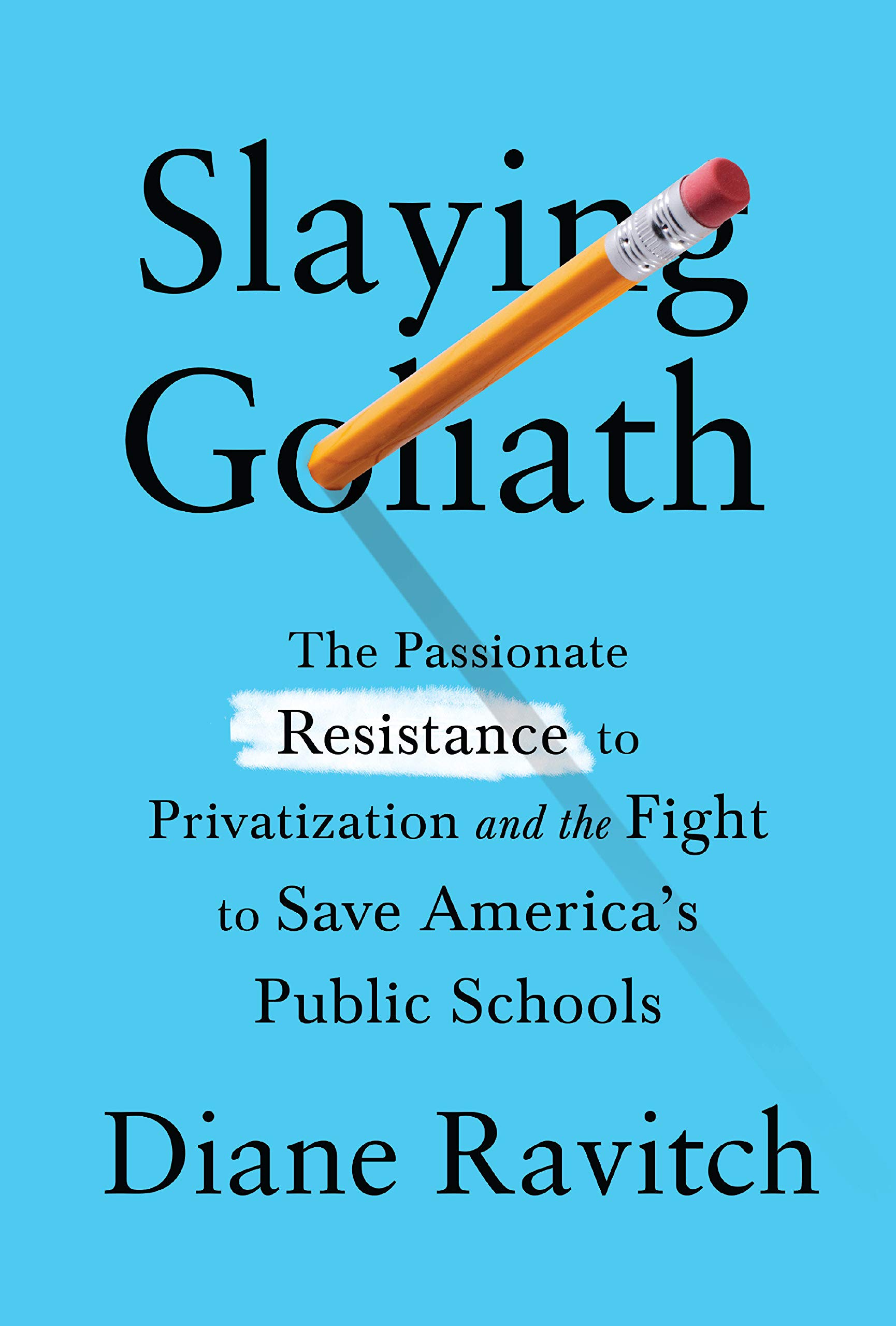 Slaying Goliath: The Passionate Resistance to Privatization and the Fight to Save America’s Public Schools
Slaying Goliath: The Passionate Resistance to Privatization and the Fight to Save America’s Public Schools
by Diane Ravitch, Vintage Books, New York, N.Y., 2020, 352 pp., $16.95 softcover
Slaying Goliath is a natural transition for this noted education researcher and former assistant U.S. secretary of education. In her latest work, Diane Ravitch painstakingly lays out her argument.
Slaying Goliath is a concise summary of the failures since
A Nation at Risk was produced in 1983. She highlights major policy issues and the havoc they’ve created. In 2000, No Child Left Behind; in 2009, Race to the Top; in 2015, Every Student Succeeds. Ravitch points out these initiatives have resulted in no improvement on NAEP scores. She describes how billionaires have attempted to coerce and coopt public education to match their biased views. She calls these meddlers the “disrupters,” a well-heeled group that has failed to improve public schools. Ravitch calls out charter schools for the resources they’ve robbed from public schools. In both cases, she meticulously names who these disrupters are, their focus and even how much they’ve contributed.
Ravitch gets into trickier ground when she attempts to catalog the “resistance.” Resisters are those people and groups who are opposed to the disrupters. She describes how state control isn’t working in Louisiana, New Mexico and Florida. She points to recent teacher strikes as evidence the resisters are winning.
Superintendents must function along the cusp of these two competing forces. Improvement comes from working with teachers. Staying focused on what works requires collaboration and respect for ideas from others. This book falls short, not because it isn’t realistic, but because it fails to recognize this essential requirement.
Reviewed by Kenneth E. Hoover, retired superintendent, Wrangell, Ark.